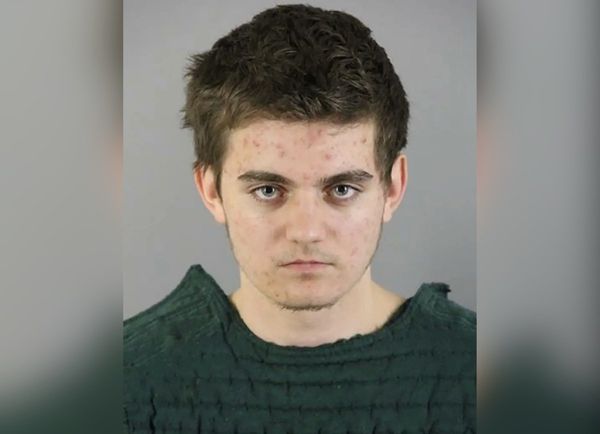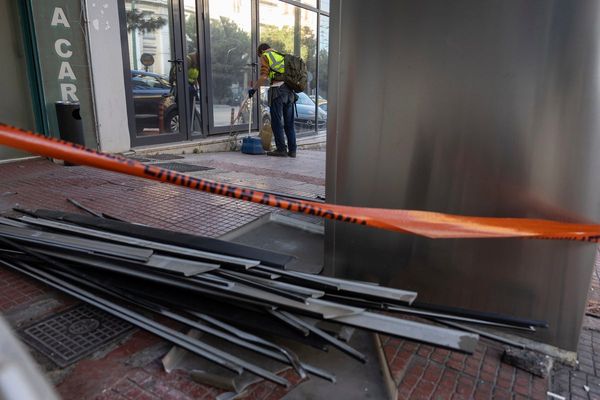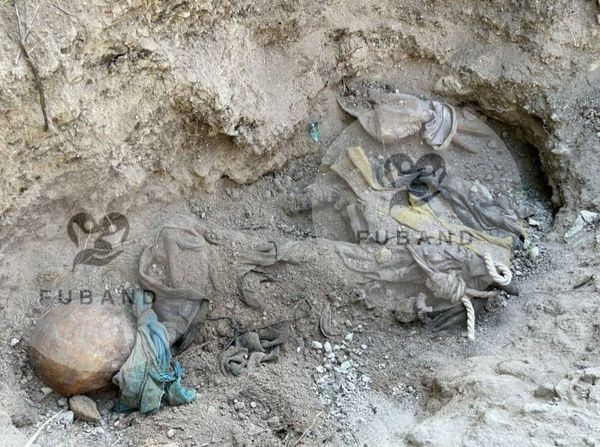
Mona’s* daughter sent her emails which record the abuse she alleged she was suffering at the hands of her partner. The emails, submitted as evidence at the inquest into her death, had subject lines like “please don’t read – just keep” and “don’t delete ever”.
Her daughter, a former Northern Territory police officer who was dismissed from the force in tragic circumstances, was in a relationship with a serving cop.
Mona says she did not read these emails until after her daughter died amid what a coroner described as a “history of domestic violence”.
“I knew she sent me emails, so I got my laptop out, and here’s all her accounts,” Mona says.
“It was: ‘he hit me several times today, he’s knocked out my contact lens’, and as I read them I could piece them together”.
She started to doubt whether the death of her daughter was simply an accidental overdose, as she had been told.
The coroner, Judge Greg Cavanagh, in his inquest findings, also thought there were questions to answer.
He referred the matter to the commissioner of police and the Director of Public Prosecutions (DPP) in 2021, saying: “I believe that offences may have been committed in connection with the death.”
Cavanagh found the death was caused by a head injury. In his inquest findings, he says the doctor who performed the autopsy found the injury, even in the context of her chronic alcoholism, “would not happen spontaneously” and “required some form of trauma, likely a hit to the head, either due to falling or from another person”.
The officer, who along with his former partner cannot be named because of a non-publication order imposed by Cavanagh, was subsequently charged with failure to rescue, as it was alleged he had not sought medical treatment for his partner.
But as Guardian Australia reported in November, the case was dropped and the officer has returned to active duty.
Mona says she was asked by the DPP to travel to Darwin from her home in another state only a week before the officer’s trial was due to start so she could be told in person that the case would be discontinued.
She says she is speaking publicly about the death for the first time to ensure her daughter is not forgotten and to urge police to treat family violence complaints against their own officers more seriously.
But Mona also feels restricted about what she can say about the case. When referring to it, she cannot say her daughter’s name publicly due to the non-publication order, which she would like to see lifted, in part to help her grandchildren understand the circumstances of their mother’s death.
The coroner’s rationale for granting the order at the time was because the evidence heard at the inquest “involved sensitive personal matters that would inevitably have significant and negative impacts on the children”. The DPP has raised Mona’s wishes with the coroner’s court.
Guardian Australia has reviewed hundreds of documents related to the case, including police witness statements, the postmortem examination report and diaries kept by Mona’s daughter that were considered at the inquest and informed the coroner’s findings.
The picture that emerges is of a young mother struggling to overcome a horrific miscarriage and suffering post-traumatic stress disorder, before falling into alcoholism and losing her dream job as a police officer while in the grips of her addiction – which also affected the relationship with her partner.
She appears to maintain hope her life would improve, yet laments a troubled relationship that she says she was planning to leave.
The documents also unspool a ramshackle investigation into her death, painting in richer detail the failures Cavanagh refers to in his findings.
There were 17 family violence reports assessed as part of the inquest, dating from 2015 until 2020. Some of the reports Cavanagh notes in his findings include claims that the woman had also been violent and many reports occurred in the context of her alcoholism.
In one report, nearly five years before her death, the woman herself was arrested and a domestic violence order was issued requiring that she not be intoxicated around her partner and children. However, Cavanagh points out that no DVO was taken out to protect her and refers to the assistant commissioner of the NT police’s opinion that the failure “likely impacted [her] trust in the manner in which police would handle reports of domestic violence and may have undermined her willingness to engage with the agency”.
In other reports, the partner told investigating police that when using force against her it was “reasonable”, that he “only struck [her] in self-defence” and that he was “a victim”.
The reports include multiple references over years to violent incidents the woman alleged she had suffered at the hands of her partner, but also multiple times where the woman retracted these claims despite physical evidence of injuries. Cavanagh described these retractions as “red flags” of possible coercive control that “should have led to further investigation” by the police.
He also considered separate claims that the officer was “manipulative and controlling”, and evidence from other police, relatives of the former officer, and a mental health nurse who was treating her.
In his comments, Cavanagh notes that “the reasons victims of domestic violence don’t report the violence and, if they do, seek to retract their reports are today well known”.
He also observes “the reasons why a victim might not wish to report are magnified when the [alleged] perpetrator is a police officer”, noting concerns expressed by the woman that there was “no point”, she “knew how the system works”, that her partner was a police officer and “he would be informed of the complaint” and she would have to “deal with the consequences”. She also said that she had spoken to the police and “nothing was done”.
He goes on to note that “those fears appear to have been realised”, pointing out that the head of the domestic violence unit at the time said “throughout these incidents, we have failed”.
Cavanagh was critical of a decision not to establish a crime scene after the death, even though there were previous family violence complaints under investigation at the time the former officer died.
He notes this decision not to establish a crime scene was likely “affected by similar considerations to the failure to protect [the woman] after complaints were made”.
“In effect, the word of a fellow police officer weighed more heavily than it should, and her death was believed to be an overdose,” Cavanagh notes.
“In this case there was also the history of domestic violence including the recent reports that were at that very time being investigated.
“The assistant commissioner indicated that a crime scene should have been declared, saying all unexpected deaths should be treated as suspicious until proven otherwise.”
Cavanagh notes that the woman was planning to leave her partner in the weeks immediately before her death.
Although the woman’s partner provided a statutory declaration to police about the death, Cavanagh says that “parts of that declaration … are contradicted by other evidence in the investigation brief”.
He also says there were “questions about what happened during those last five days [of her life] that needed answers”.
“However, when counsel assisting called upon the partner to provide evidence, his lawyer sought that he not be compelled to do so on the grounds that it might incriminate him in an offence or offences in relation to her death,” Cavanagh noted.
“In my 25 years as the Territory coroner, that is the only occasion that a serving police officer has refused to answer questions because the answers might incriminate him or her in an offence relating to the death.”
The officer’s lawyer was contacted for comment.
Many condolences – not enough action
Mona contributed three statements and reams of supporting material to the inquest via investigating police.
She says she did not want her involvement made known to her daughter’s partner, given she wished to maintain contact with her grandchildren. But she says it became clear one day that something was amiss. She says he refused to let the children see her on a regular visit.
Mona made a complaint to the force’s professional standards command in October 2021, saying she believed the officer had been told she had been speaking to police.
In her statements to the police for the inquest, Mona had made clear she suspected the officer may have caused her daughter’s death.
Almost six months later, NT police confirmed her worst fears: an error by the coroner’s office had resulted in him finding out about her suspicions.
In a letter sent to Mona in April 2022, Sonia Kennon, the det acting supt of the internal investigations division, said comments contained within her statement had been included in an unredacted “covering report” provided by police investigators to the coroner’s office.
“The coroner’s office have confirmed that they provided a copy of the unredacted report to [the police officer] through his legal representative,” Kennon wrote.
“This was an oversight by the coroner’s office … I offer my sincere condolences to you and your family.”
Mona’s concerns about how police treated her daughter’s complaints of domestic violence during her life, and then how they investigated her death, now extended to how the coronial process was being conducted.
She felt an overwhelming sense that her daughter did not matter.
That feeling only deepened when Mona was told the charges against her daughter’s partner in relation to the death would be dropped – despite him being committed to stand trial.
In a letter sent to her in September last year, the DPP, Lloyd Babb SC, explained the reasoning for the decision, including that he personally reviewed the brief of evidence and considered charging the officer with alternative offences.
Babb said in the letter that he did not believe there was enough evidence for the DPP to prove the officer “callously failed” his partner, which under current law meant establishing a “deliberate and conscious choice by an informed accused not to provide aid or assistance to the victim”.
He felt, based on the evidence the prosecution could present to a jury, that they would be unable to prove the offence beyond a reasonable doubt.
“In arriving at this decision I have carefully considered the available evidence, as well as the findings of the coroner and the reasons for that.
“I acknowledge that this is a very difficult decision which is likely to cause you understandable distress. I express again my sincere condolences for the passing of your daughter.”
Mona has heard plenty of condolences, but not seen enough action.
Multiple coronial findings in the NT, most notably in relation to the deaths of Aboriginal women, point to a family violence system in dire need of an overhaul – at the exact time a new territory government swept to power promising that police would prioritise a tough response to youth crime.
The inquest into the death of the former police officer made four recommendations, which the force told Guardian Australia it had implemented, including that an assistant commissioner oversees all “domestic violence” complaints relating to police and that all police officers have training in the identification of “red flags” for coercive control.
Mona is far away from the NT, in another state.
A living room wall in her house is covered with memories of her daughter: in uniform at her graduation, beaming next to more senior officers, in dress-ups as a child, next to her own children in dress-ups.
She wants those pictures to be published, for her daughter to be named, for her to be remembered in death as a strong woman working harder to make herself better.
“I just want it for her … and for her children.”
*Not her real name
In Australia, the national family violence counselling service is on 1800 737 732. In the UK, call the national domestic abuse helpline on 0808 2000 247, or visit Women’s Aid. In the US, the domestic violence hotline is 1-800-799-SAFE (7233). Other international helplines may be found via www.befrienders.org.







